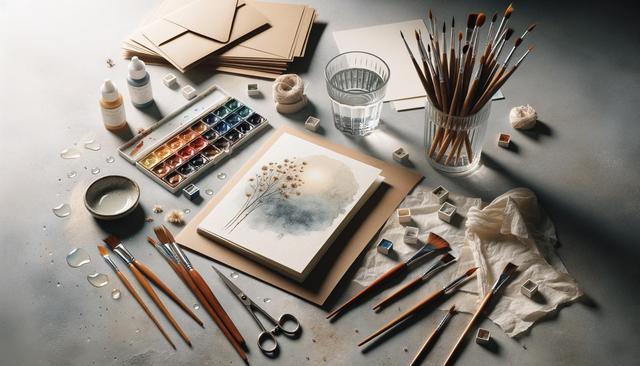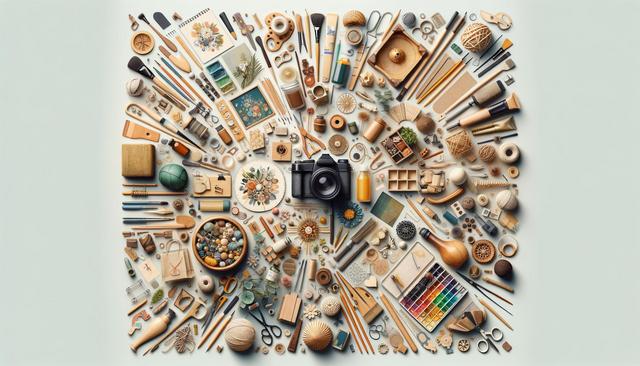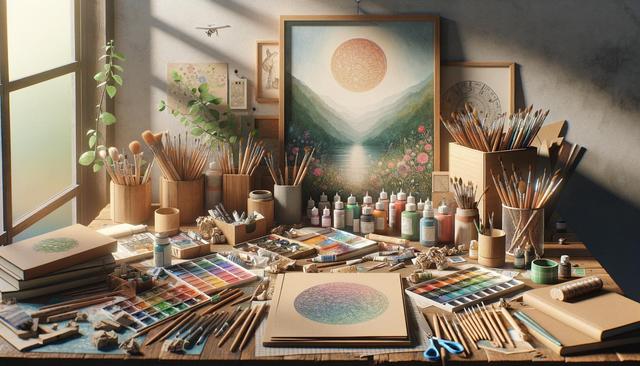Mastering Color Theory: A Guide for Fine Artists and Digital Designers
Understanding color theory is essential for both fine artists and digital designers, as it forms the foundation for creating visually compelling and harmonious works.

The Basics of Color Theory
Color theory is a fundamental aspect of art and design, providing a framework for understanding how colors interact and the effects they have on the viewer. At its core, color theory involves the principles and guidelines that artists and designers follow to create aesthetically pleasing combinations. The color wheel is a crucial tool in this process, illustrating the relationships between primary, secondary, and tertiary colors. Primary colors—red, blue, and yellow—are the root of all other colors. By mixing these, you can create secondary colors such as green, orange, and purple. Further mixing leads to tertiary colors, which are combinations of primary and secondary hues.
Understanding the color wheel allows artists and designers to explore complementary colors—those that are opposite each other on the wheel—such as blue and orange or red and green. Complementary colors create high contrast and are often used to make elements stand out. Additionally, analogous colors, which are next to each other on the wheel like blue and green, provide a harmonious and soothing effect. Recognizing these relationships aids in crafting well-balanced compositions in both fine art and digital design.
Applying Color Theory in Fine Arts
Fine artists have long relied on color theory to convey emotions and create depth in their work. The use of warm and cool colors can evoke different feelings and moods. Warm colors like red, orange, and yellow are often associated with energy, warmth, and intensity, while cool colors such as blue, green, and purple can evoke calmness, serenity, and sadness. Mastering this aspect of color theory enables artists to manipulate the viewer’s emotional response and enhance the narrative of their artwork.
In addition to emotional impact, color theory assists fine artists in creating depth and perspective. By employing techniques such as atmospheric perspective, artists can use color gradients to suggest distance, with cooler and lighter colors receding into the background and warmer, more saturated colors appearing closer. This technique is particularly useful in landscape painting, where the illusion of vast distances can greatly enhance the work’s realism and impact.
Digital Design and Color Theory
Digital designers also benefit greatly from a solid understanding of color theory. In digital media, color choice is crucial for user interface design, branding, and marketing. Effective use of color can improve user experience by guiding attention, indicating functionality, and enhancing readability. For instance, utilizing contrasting colors for text and background can significantly improve legibility, which is vital in web and app design.
Furthermore, digital designers must consider the psychological effects of color in branding. Different colors can convey specific messages and emotions; for example, blue is often perceived as trustworthy and professional, while green is associated with growth and health. By strategically selecting colors, designers can align their work with the brand’s identity and values, ensuring that the visual elements effectively communicate the intended message to the audience.
Advanced Color Techniques
Beyond the basics, artists and designers can explore advanced color techniques to add complexity and interest to their work. Techniques such as color harmony, value contrast, and saturation can provide new dimensions to a composition. Color harmony involves creating a pleasing arrangement of colors based on their relationships on the color wheel. This can be achieved through schemes such as triadic, which uses three evenly spaced colors, or tetradic, which involves four colors arranged in two complementary pairs.
Value contrast, on the other hand, focuses on the lightness or darkness of colors, creating depth and focus within a piece. High value contrast can direct the viewer’s eye to specific areas, while low contrast can unify elements. Saturation, or the intensity of a color, can also be manipulated to create emphasis and interest. Desaturated colors can serve as a backdrop, allowing saturated hues to draw attention where needed.
Conclusion: The Importance of Mastering Color Theory
For both fine artists and digital designers, mastering color theory is a vital skill that enhances creativity and effectiveness. By understanding the principles of color interaction, artists can create works that resonate emotionally and visually with their audience. Whether you’re painting a canvas or designing a digital interface, the strategic use of color can transform your work from ordinary to extraordinary. As you continue to explore and apply these concepts, you’ll find that color theory is not just a set of rules but a powerful tool for artistic expression and communication.





